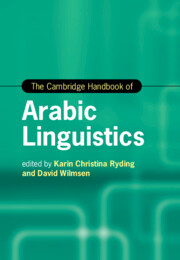Book contents
- The Cambridge Handbook of Arabic Linguistics
- Cambridge Handbooks in Language and Linguistics
- The Cambridge Handbook of Arabic Linguistics
- Copyright page
- Contents
- Figures
- Tables
- Notes on Contributors
- Acknowledgements
- Abbreviations
- Introduction
- Part I Arabic Applied Linguistics
- 1 Arabic Applied Linguistics
- 2 Language Planning in the Arab World in an Age of Anxiety
- 3 The Study of Arabic Language Acquisition
- 4 Issues in Arabic Language Testing and Assessment
- 5 Arabic Study Abroad
- 6 Models of Arabic Pronunciation
- Part II Arabic Variation and Sociolinguistics
- Part III Theoretical and Descriptive Studies
- Part IV Arabic Computational and Corpus Linguistics
- Part V Arabic Linguistics and New Media Studies
- Part VI Arabic Linguistics in Literature and Translation
- Index
- References
4 - Issues in Arabic Language Testing and Assessment
from Part I - Arabic Applied Linguistics
Published online by Cambridge University Press: 23 September 2021
- The Cambridge Handbook of Arabic Linguistics
- Cambridge Handbooks in Language and Linguistics
- The Cambridge Handbook of Arabic Linguistics
- Copyright page
- Contents
- Figures
- Tables
- Notes on Contributors
- Acknowledgements
- Abbreviations
- Introduction
- Part I Arabic Applied Linguistics
- 1 Arabic Applied Linguistics
- 2 Language Planning in the Arab World in an Age of Anxiety
- 3 The Study of Arabic Language Acquisition
- 4 Issues in Arabic Language Testing and Assessment
- 5 Arabic Study Abroad
- 6 Models of Arabic Pronunciation
- Part II Arabic Variation and Sociolinguistics
- Part III Theoretical and Descriptive Studies
- Part IV Arabic Computational and Corpus Linguistics
- Part V Arabic Linguistics and New Media Studies
- Part VI Arabic Linguistics in Literature and Translation
- Index
- References
Summary
Language tests are a widely used form of educational evaluation that provide information about various aspects of test takers’ language abilities, and often represent a crucial component of the ongoing assessment process that ideally characterizes the healthy functioning of a language curriculum. In the context of teaching Arabic as a foreign language (TAFL), learners, instructors, and other language professionals are likely familiar with formats such as the in-class multiple-choice or fill-in-the-blank exam, as with more comprehensive end-of-term examinations. Many are likewise familiar with performance-based testing formats, such as the oral proficiency interview (OPI), a proprietary instrument of the American Council on the Teaching of Foreign Languages (ACTFL). In the context of second language acquisition (SLA) studies, Arabic language tests often take the form of diagnostic instruments such as the cloze or C-test, or of discrete measures of structural aspects of linguistic production elicited via an experimental task.
- Type
- Chapter
- Information
- The Cambridge Handbook of Arabic Linguistics , pp. 83 - 105Publisher: Cambridge University PressPrint publication year: 2021

